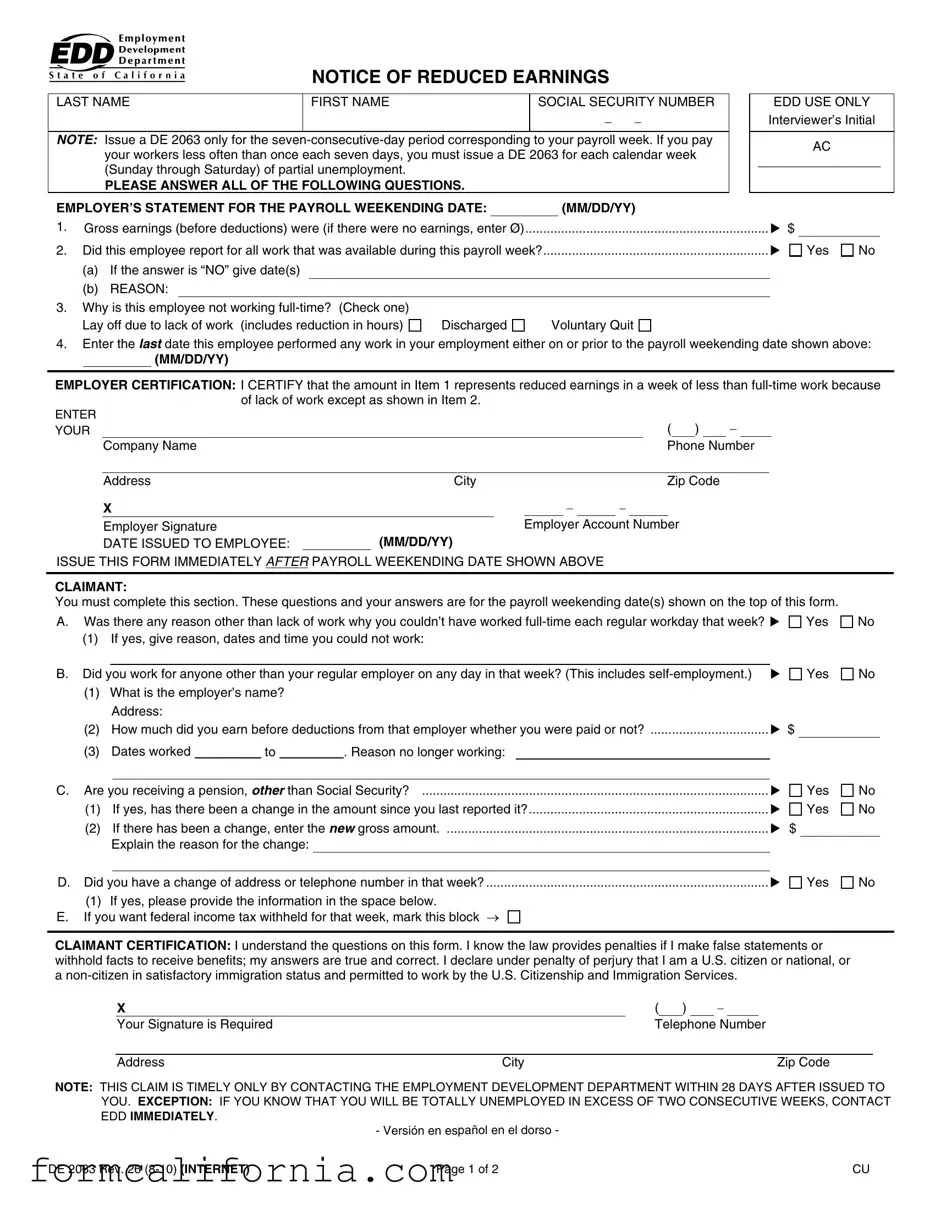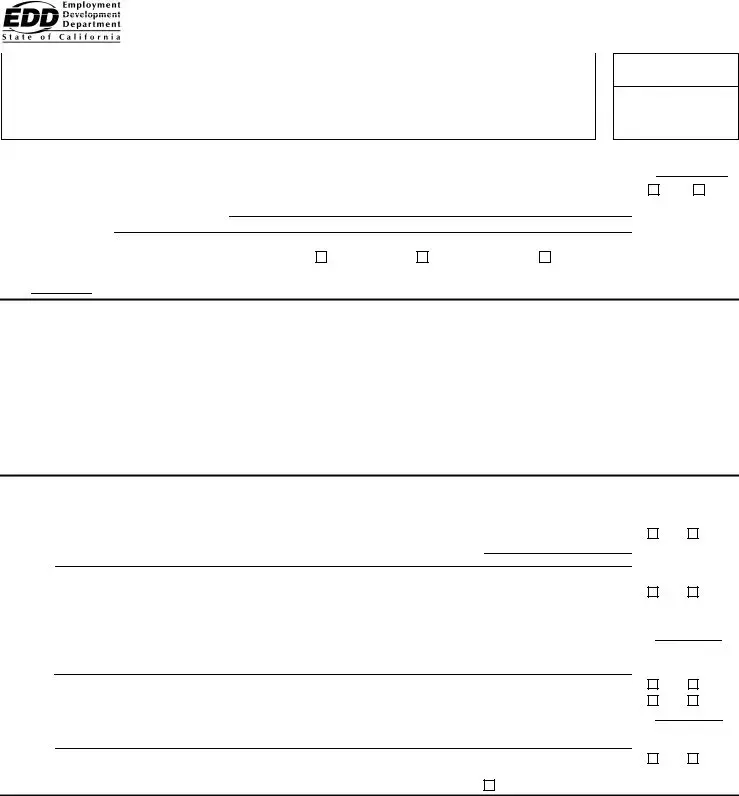The DE 2063 form is a notice used in California to document instances of reduced earnings. It is issued to employees who have experienced a decrease in their usual work hours. This form serves as an official record for both employers and the state's Employment Development Department (EDD), helping to facilitate claims for partial unemployment benefits.
Employers must issue the DE 2063 form for a seven-consecutive-day period that corresponds to their payroll week. In cases where employees are paid less frequently than every seven days, an individual DE 2063 form must be issued for each calendar week (Sunday through Saturday) of partial unemployment experienced by the employee.
The DE 2063 form requires various pieces of information, including:
-
Gross earnings for the payroll week.
-
Confirmation of whether the employee was available for all work offered.
-
The reason for the employee's reduced work hours.
-
The last date the employee performed any work.
-
Employer certification of reduced earnings due to lack of work.
Additionally, employees must answer questions regarding their availability for work, any other employment, receipt of pensions, changes in personal information, and desire to have federal income tax withheld.
The DE 2063 form is used by employers to confirm an employee's partial unemployment status due to reduced work hours. It is a crucial document for employees when claiming partial unemployment benefits from the EDD. The form must be completed accurately and issued promptly after the payroll week ending date to ensure timely processing of claims.
Failing to issue a DE 2063 form can result in delays or denials of partial unemployment benefits for affected employees. It may also subject the employer to penalties for non-compliance with state employment regulations.
No, the DE 2063 form is issued by the employer and provided to the employee. However, it is the employee's responsibility to submit this form to the EDD as part of their claim for partial unemployment benefits.
If an employee does not receive a DE 2063 form, they should contact their employer to request it. If the employer fails to issue the form, the employee may need to contact the EDD for assistance in obtaining the necessary documentation for their claim.
Yes, the DE 2063 form is available in multiple languages, including Spanish. This ensures that non-English speaking employees can understand and properly complete the form. Employers should provide the form in the appropriate language for their employees.
An employer certifies the DE 2063 form by completing all required sections, including an accurate report of the employee's gross earnings and the reason for reduced hours. The employer must then sign and date the form, confirming the truthfulness and accuracy of the information provided.
While specific processes may vary, in general, the DE 2063 form is designed to be filled out manually and given to the employee. Employers and employees should check with the California EDD for any updates or changes regarding electronic submission options.



 Yes
Yes 
 No
No